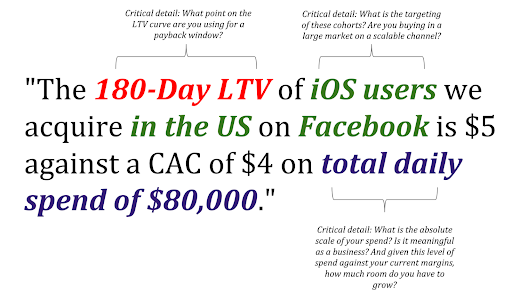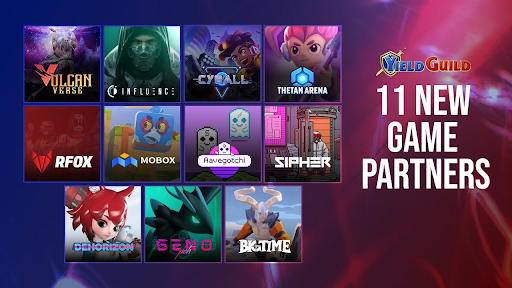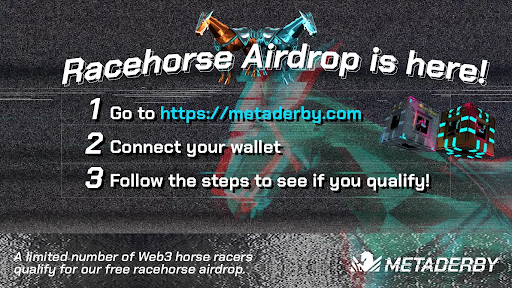Original Author: BITKRAFT Ventures
Translated by: Zen, PANews
TL;DR
Despite the rise of Web3 and blockchain technology creating many opportunities for game design, game development, and digital asset ownership, the fundamental problem in user acquisition (UA) remains unchanged: maximizing player lifetime value (LTV) while minimizing customer acquisition cost (CAC).
However, the ability to accurately measure this relationship has changed, and in the decentralized world, both sides of the equation have become increasingly blurred:
CAC is often measured in traditional games as cost per install (CPI), which is much more difficult to calculate accurately. And currently, many Web3 games are web-based games, which means no installation is needed.
The "value" in Web3 games is harder to quantify than in traditional games, and LTV return on investment may differ significantly from standard benchmarks.
Identifying players can be challenging, as players may have multiple wallets, and the wallet addresses associated with game data may actually be bots rather than humans. Using wallet addresses rather than specific users as a reference for LTV and CAC comes with risks and is difficult to accurately predict.
Traditional marketing methods have not been very effective in Web3 games, at least for now, and these approaches are challenging and underdeveloped. This puts Web3 games in an unfair competitive environment compared to web2 games. Even if powerful Web3 games are ready to invest heavily in performance marketing, the macro resistance to this type of strategy makes it prohibitively expensive and largely unsuitable for early-stage venture investment, especially since many companies may still be developing their first game.
However, opportunities still exist for savvy operators who can combine thoughtful data analysis with novel, crypto-native marketing strategies. By focusing on three key areas (community, partnerships, and Web3-native growth), founders can promote user acquisition in an economically efficient and Web3-friendly manner.
Although measuring LTV and CAC in Web3 is challenging, game companies should still prepare for the scenario where performance marketing becomes the dominant strategy again. Blockchain game companies can take several steps now to prepare for the future.
Introduction
The introduction of blockchain technology into the gaming industry has prompted many founders and industry practitioners to reexamine traditional business models. Almost every aspect of the "traditional" gaming industry - from design, development, distribution, and everything in between - is being analyzed and rebuilt to best meet the needs of the new games, users, and studios that emerge in the new Web3 gaming ecosystem.
User acquisition (UA) is no exception and, in some ways, lags behind other sectors of the gaming industry in adapting to Web3. So far, most of the development and investment activities surrounding blockchain games have focused on Pre-Seed, Seed, and Series A venture capital. At this stage, most companies are still developing their first game and are not yet ready to expand to a large user base through traditional performance marketing.
According to a report by Blockdata, by 2022, 60% of blockchain game transactions will be in the early stages, and another 17% will enter Series A. Considering that developing a game worth expanding takes time, user acquisition for Web3 games has received little attention so far. In this article, BITKRAFT will outline the challenges related to user acquisition for Web3 games, provide practical advice for companies in this field, and identify areas of opportunity for investment, user acquisition, and in-house development.
Throughout this article, BITKRAFT will refer to the terms "user acquisition" or "UA" as brand marketing (essentially more qualitative) and performance marketing (usually more quantitative). In the context of traditional games, especially mobile games, UA usually only involves performance marketing functions. However, performance marketing is not suitable for most Web3 game operations, at least for now. Blockchain games still need to acquire users through other less precise methods.
Basic Challenges of UA
Fundamentally, the effectiveness of user acquisition can always be attributed to the same basic relationship: player lifetime value (LTV) vs. user acquisition cost (CAC). As long as the lifetime value of the player exceeds the cost of acquiring that player, profitability will shift, and the efforts of UA will be considered successful.
Of course, it's not that simple in practice.
For example, players may play a game for weeks or months before deciding to spend money. The cost per install (CPI) - the most common CAC metric in games - fluctuates over time, depending on platforms, market conditions, genres, and many other factors. Additionally, operating the game and keeping players within the ecosystem require ongoing costs.
Nevertheless, the basic strategy of maximizing LTV while minimizing CAC applies to all game businesses in both traditional and Web3 gaming sectors. This relationship has not changed.
However, as we are about to discuss, in the Web3 environment, there are some key assumptions behind this truth that are no longer applicable, forcing savvy operators to seek new solutions.
Key Assumptions
Founders with market marketing or user acquisition experience in the traditional gaming industry should be familiar with the following statements:

This highly specific approach makes traditional user acquisition more scientific than artistic. Marketers and user experience practitioners can input the above information into spreadsheets and predict the relationship between LTV and CAC over a period of time, thus quickly assessing the commercial viability of a specific gaming business.
However, in order to acquire users so accurately, we must first understand them.
In the traditional gaming environment, users are relatively easy to identify--they are independent users installed on specific devices. In the example above, we know that they play games on iOS, live in the United States, and have been exposed to some content from the Meta Audience Network (Meta advertising delivery business).
Although there may be some errors, such as multiple users sharing the same device, or a user playing games on multiple devices, we can still associate specific devices with a series of behaviors we observe in the game and attribute that user to the channel through which they reached our game.
In the world of Web3, we can no longer make such direct assumptions.
Although all games distributed through traditional means such as mobile app stores, PC distribution platforms, and console networks theoretically benefit from the data pipelines frequently used by UA professionals, mixed factors such as wallet ownership and platform policies make this process less straightforward.
Wallet Ownership:
Since Web3 games require encrypted wallet connections to leverage the advantages provided by blockchain integration, game companies need to be able to directly attribute wallets to players. However, considering that a user may have multiple wallets, this can be challenging.
In addition, the content of any given wallet can change over time - NFTs and other tokens can come and go, asset values can fluctuate, and some assets may not even belong to the wallet holder in the first place (for example, in the case of borrowed or leased NFTs). This makes it difficult to accurately estimate LTV based solely on wallet content.
Wallets also obscure the identity of users, making it more challenging for them to be effectively targeted for advertising. In fact, these wallets may not be operated by humans at all, but by robots or artificial intelligence. Wallets controlled by robots may even have negative LTV, as bots are a common means of maximizing value extraction in Web3 games.
Platform Strategy:
Most traditional game distribution platforms are hesitant about allowing blockchain integration or the use of NFTs. At the time of writing, any NFT sales on iOS or Android devices must be completed through in-app purchases, resulting in a 30% revenue share for Apple and Google. These platform owners also impose restrictions on unlocking content through NFTs, effectively limiting their use cases.
Console manufacturers have sent mixed signals regarding blockchain games: on one hand, they make cautious statements to the public, but on the other hand, they quietly explore this field through investments and research and development. On the PC side, Valve has issued a complete ban on NFTs and blockchain games, while its competitor, the Epic Games Store, has welcomed them and already offers some blockchain games.
All of this uncertainty, combined with a lack of mature backend release infrastructure to support Web3 integration, has led many Web3 founders to focus their projects on browser-based experiences, and there has been a surge in encrypted wallet integration. Browser-based games do not require installation or downloads, rendering the standard game CAC (Customer Acquisition Cost) metric useless. Even if wallets can be attributed to specific acquisition channels, players can easily connect and disconnect wallets. If a player connects a wallet but does not make any transactions, can a company truly consider that player "acquired"?
To summarize:
If we cannot accurately measure LTV...
We cannot reliably measure CAC...
...can we really optimize user acquisition?
Also, it should be noted that even in the best case scenario, user acquisition is challenging. With the changes in Apple ATT policy, user targeting has become more difficult. The evolving global privacy regulations have further complicated the matter. Even if done well, the cost of user acquisition remains very high (especially in free games):
Even if a Web3 game aims to expand to a broader user base (i.e., non-crypto-native users), it will be operating in an unfair competitive environment against non-Web3 games that don't face challenges like user login, installation attribution, LTV tracking, or platform policies, and have years of UA data for predictive purposes.
Therefore, traditional performance marketing is largely unwelcome unless for highly developed and well-funded Web3 projects and/or those with minimal integration with Web3.
From the perspective of the traditional gaming industry, this seems to be a challenging environment for startups. However, Web3 has also presented its unique user acquisition opportunities that can be leveraged by enterprises of various scales - we'll further explore this topic in the next section.
Practical UA Advice for Founders
In the absence of reliable LTV and CAC metrics, Web3 founders should prioritize low-cost, crypto-native solutions for user acquisition. Fortunately, there are various options available for savvy marketers who are familiar with Web3 users and are willing to diverge from traditional gaming approaches.
Harnessing Player Communities
Given the grassroots nature of Web3 game development, starting from your game's existing community is a constructive and cost-effective starting point. As early adopters who can be incentivized through the mechanisms of the crypto economy, these community members can be likened to the "golden cohort" of traditional games. They will become your game's greatest advocates and top consumers.
As an early contributor to your game ecosystem, a token holder of your Genesis series, and even a speculator looking for the "next big thing," community members have vested interests in increasing the visibility of the project and attracting new users to your game. While economic benefits or money-making potential may be the primary motivations for some players, many others may enjoy the opportunity to participate in community-driven development. Low-cost community building efforts such as art competitions, game story writing, friend referral programs, etc., are effective tools for enhancing the strength of community members. When combined with the endowment effects brought by Web3 native initiatives (free NFT minting, token airdrops, allowing list points, etc.), players can have a greater sense of ownership in the game ecosystem they are a part of.
Enabling these "co-owners" to play an active role in promoting the game can be a powerful growth strategy and may be more cost-effective than hiring dedicated full-time employees to do the same thing.
Content creators are particularly valuable in this regard as they can generate buzz around your game through social media channels (such as Telegram, YouTube, Twitch, and TikTok) frequented by Web3 gamers. By collaborating with content creators, you can tap into their followers and leverage their expertise to showcase your game to a wider audience. Another way to leverage community members is to seek their help in finding and acquiring potential partnerships with other Web3 communities. Most individuals active in the Web3 gaming community are not confined to just one Discord server. Instead, they are likely involved in multiple games, PFP projects, DeFi protocols, DAOs, etc. Allowing the community to identify other projects or communities with shared values or overlapping audiences can rapidly and cost-effectively provide your team with a "warm introduction" that may eventually lead to valuable partnerships.
Partnerships + Collaboration
According to DappRadar, as of the end of May this year, there were only over 1 million unique active wallets. Given the relatively small potential market of current Web3 gamers, partnering with like-minded communities that have already overcome challenges can be another economically effective way to acquire users and improve the Web3 onboarding experience.
Collaborating with other organizations can bring many benefits to your project:
Harnessing new networks to increase game traffic.
Gathering valuable data about overlapping or adjacent audiences.
Cross-promotion of marketing content, NFT drops, whitelist promotions, etc.
Reduce the cost and risk of acquiring new users because these partner communities are already prepared for Web3 content.
Given the prevalence of scams and speculative behavior in this field, partner relationships can also be seen as a more organic way to promote products to Web3 audiences who often have a skeptical attitude towards traditional advertising formats. There are many options for building partnerships and collaborations. A common early example is partnering with guilds. Guilds can assist with asset distribution and utilization, provide liquidity, execute marketing plans, organize esports events, create content, and more. These can be good starting points for initiating conversations, even if just to explore the possibilities.

There are also other collaboration opportunities in the platform and infrastructure provider space. Countless blockchain technologies, solutions, distribution and aggregation platforms, markets, automated market makers, and myriad other entities are all raising overall awareness of Web3, particularly when it comes to engaging with Web3 games. Partnering with these organizations can increase game visibility and potential additional benefits.
For example, collaborations with marketplaces like Magic Eden or OpenSea could lead to increased transaction volume, while transactions with layer 2 providers like Polygon or Immutable can open up possibilities for other game developers or those seeking to establish a Web3 presence. There may even be opportunities to collaborate with other companies to save on wallet integration or advertising development time and resources, which can be beneficial for user acquisition and engagement.
Lastly, one area of collaboration that has seen significant growth in recent years is gaming and IP partnerships. This type of deal takes on a whole new format in Web3, where interoperability allows game assets to have multiple uses across projects. A recent prominent example is the collaboration between Limit Break and Castaways, but examples abound in traditional gaming as well. Collaborations with other games or IP can not only bring in new audiences but also demonstrate that the studio is capable of handling future IP integrations with confidence.
Of course, for all of the above options, the challenge lies in identifying the right partner relationships for the project. Key to this work is having a deep understanding of wallet data - something that BITKRAFT will delve into in more detail in the scaling planning section later on.
Web3-Native Growth
Perhaps the most interesting opportunities and space for user acquisition in blockchain games lie in harnessing the native capabilities of Web3 to drive growth. These methods are uniquely enabled by blockchain technology, hence there are few precedents in the gaming world.
One of the most common methods in this category is to use airdrops and token issuance as incentives for users to participate in the project.
Airdrops or free token distributions are used to attract new users, allowing developers to send tokens to a targeted wallet address list without permission. While this may seem like a relatively inexpensive form of marketing at first glance (as token senders only need to pay transaction costs), its effectiveness is questionable. In multiple tests conducted by Web3 marketing company Raleon, less than 1% of game-related airdrops were viewed by recipients, resulting in a click-through rate of less than 0.05%.
Intuitively, this makes sense, as receiving an airdrop is like receiving unsolicited spam email that you can't delete. Therefore, airdrop strategies should be handled with caution, with the goal of maintaining the stickiness of existing players rather than acquiring new users. If airdrops are used as rewards (such as rewarding community contributions, completing tasks, etc.), they can attract existing players, re-engage lapsed players, and potentially generate additional word-of-mouth marketing. However, the potential value of the tokens being distributed must be taken into account. If the tokens have liquidity and meaningful value on the open market, the execution cost of airdrops suddenly becomes more expensive when a significant portion of the token supply is transferred out of your project.
A specific type of airdrop strategy commonly used in DeFi is known as "vampire attacks," where new projects incentivize users to convert by airdropping valuable tokens, thereby siphoning users away from established projects. This has also entered the Web3 gaming space: horse racing game MetaDerby airdropped free NFTs and $100 worth of in-game tokens to players of Zed Run and Pegaxy (two competing horse racing games).

Another strategy to acquire users found only in Web3 is through token issuance, including the controversial "X-to-Earn" systems. While discussions on token economics are beyond the scope of this article, it can be said with certainty that incentivizing users with tokens that have potential value is an effective way to generate attention in the short term, although it may only be effective for a short period of time. Even this temporary growth may start to yield diminishing returns as players become savvier, and customers generally become more cautious in avoiding scams and unsustainable economies.
However, token issuance does not have to be limited to profit plans. Games may use token rewards as a means to keep players engaged, incentivize deeper gameplay, or grant governance voting rights: for example, issuing tokens when players win a competitive match or achieve certain milestones in the game. These will be determined by smart contracts and require careful pre-planning by the game team to avoid creating unsustainable game economies, but they can serve as powerful retention mechanisms.
Scaling the Plan
While most Web3 gaming organizations may not yet be prepared for mass effect marketing, it is important to focus on the future and be ready to adjust strategies as the industry matures and new opportunities arise. Today, many steps can be taken to better prepare for tomorrow's user-driven growth while providing direct benefits for other marketing efforts within the organization.
First, it's worth taking the time to thoroughly evaluate the organization's data readiness before spending money on UA:
Is telemetry enabled for the game's onboarding process, so you can measure progress, monitor churn, track conversions, and trigger re-engagement events?
Are funnels for the game tracked (visual representations of the customer journey that depict the sales process from awareness to action)? Can you track players' path from social media to Discord to your game?
Can data distinguish between paid and organic traffic?
Next, understanding the unique data associated with Web3 wallets can be helpful. While wallets present their own set of challenges, as mentioned earlier, they also provide interesting insights that were previously unavailable in other traditional gaming scenarios. Here are some examples of unique metric types available in Web3:
Analysts can look at the assets in a given wallet and track their individual and accumulated value.
Wallet transactions can be analyzed to examine total transaction volume, transaction frequency, and average transaction value.
Current purchasing power of the wallet, shares of transactions occurring within a given project or set of smart contracts, or total value flow in/out can also be analyzed.
Analysts can even track wallet interactions to visualize the network of connections to other games, dApps, and other Web3-native experiences.
Finally, and most importantly, it is worth mentioning that no user acquisition strategy, no matter how clever, can fix a game with inherent flaws. Before investing heavily in user acquisition, developers must strive to create engaging, memorable, and entertaining experiences. This is not a problem that can be solved simply by throwing money at it.
Opportunities
As Web3 user acquisition is a nascent field, companies have the opportunity to address the UA challenge and overcome the challenges associated with accurately measuring Web3 game performance.
As mentioned above, gaining an accurate understanding of UA capabilities in Web3 games is challenging. Market participants in the AdTech space are sure to try filling this gap, but traditional game attribution platforms currently lack the ability to incorporate cryptocurrency price fluctuations into their platforms. This presents an opportunity for native crypto companies to quickly ship and stand out in the competition.
Similarly, companies operating in the Web3 identity space are also well-positioned to gather different data sources in a way that benefits both players and developers, leveraging the opportunity to improve access to trustworthy, actionable user acquisition data. Given the technical complexity, high transaction volumes, and wide range of devices (PC, consoles, mobile devices, web browsers, etc.) used, games are an excellent proving ground for such technology. While successful implementation in the gaming space may not be directly replicable across other industries, it can be more widely replicated in the media and entertainment sectors.
With the help of zero-knowledge proofs, if a company can allow players to have better control and privacy over their data while also connecting them to the game industry's UA segment, seeking new ways to engage with them, it may have the opportunity to compete with existing ad tech companies such as ironSource and AppLovin. For any AAA game publisher looking to enter the Web3 space, the company is also a prime acquisition candidate.
By allowing users to demonstrate "proof of game work," the need for players to assert their identity can also be addressed, perhaps through the technical means of POAP or soul-bound tokens. Players with more impressive achievements can leverage these achievements to gain better incentives within game ecosystems where they may be needed. These achievements may be related to in-game accomplishments, but they can also easily be linked to ecosystem-building contributions such as inviting friends, writing blog posts, or participating in game testing. Players will have the incentive to participate, and game companies will have more actionable information to target those valuable players. In fact, this may resemble loyalty rewards in casinos, employee discount programs, or the Starbucks "Star" system.
Another potential opportunity is "CRM for Developers". As more and more game projects launch on Web3, the demand for crypto-native community builders and contributors to join these bottom-up ecosystems will grow. These builders will come from different backgrounds and meet various needs (software engineers, social media marketers, forum moderators, player support, etc.), and they will increasingly be used as growth partners for Web3 game projects. For game publishers, associations, or marketing companies seeking to provide services to a growing audience of game developers, forming a strong and high-value contributor CRM can be an excellent business opportunity. Such companies can be compared to specialized human resource companies dedicated to Web3 game projects. Besides the opportunities listed above, there may be more. Fundamentally, providing, storing, and distributing clean, actionable, and compliant data to stakeholders in the Web3 gaming field always holds value, and this value will only grow as more users join Web3 in the future.



